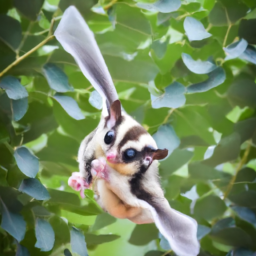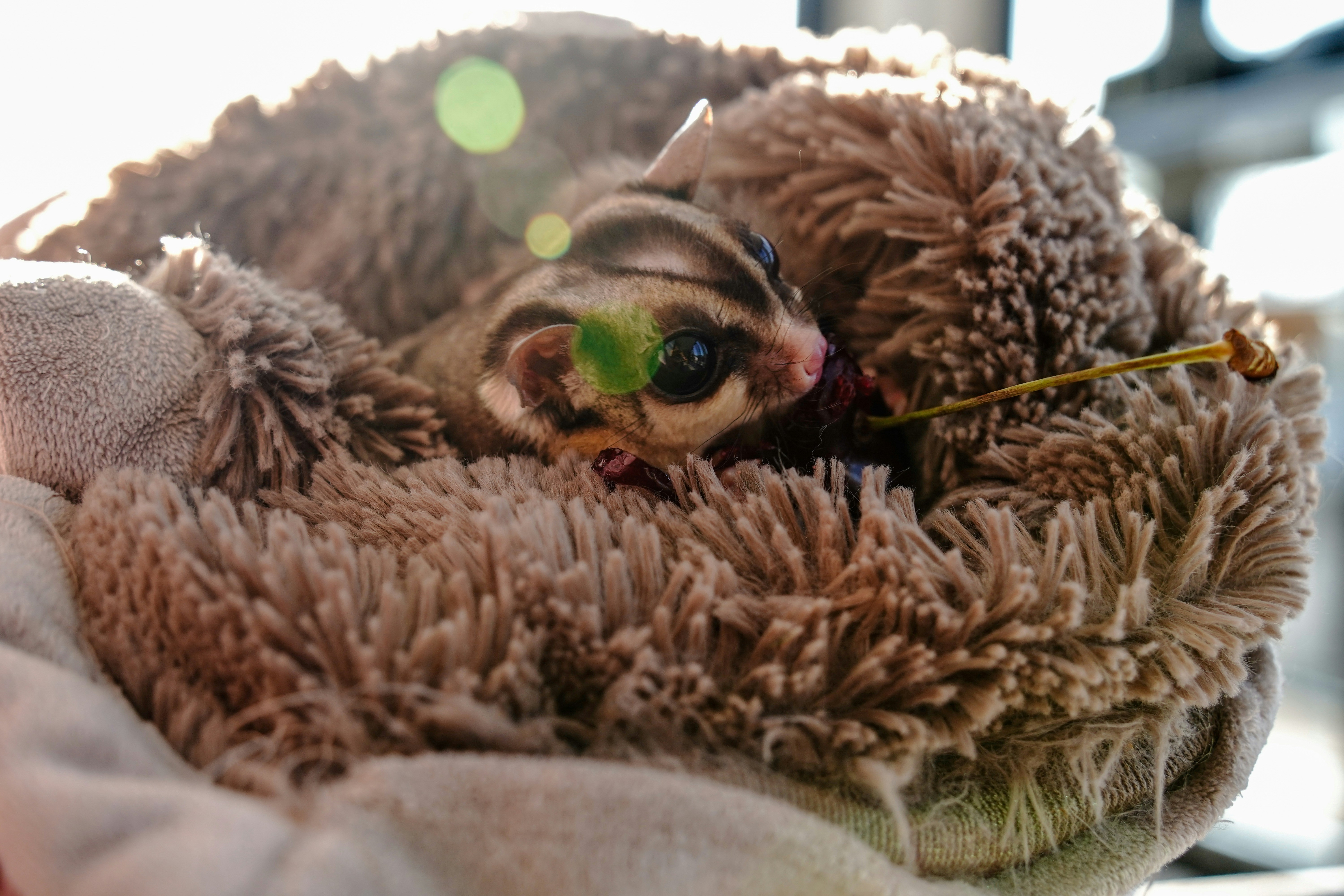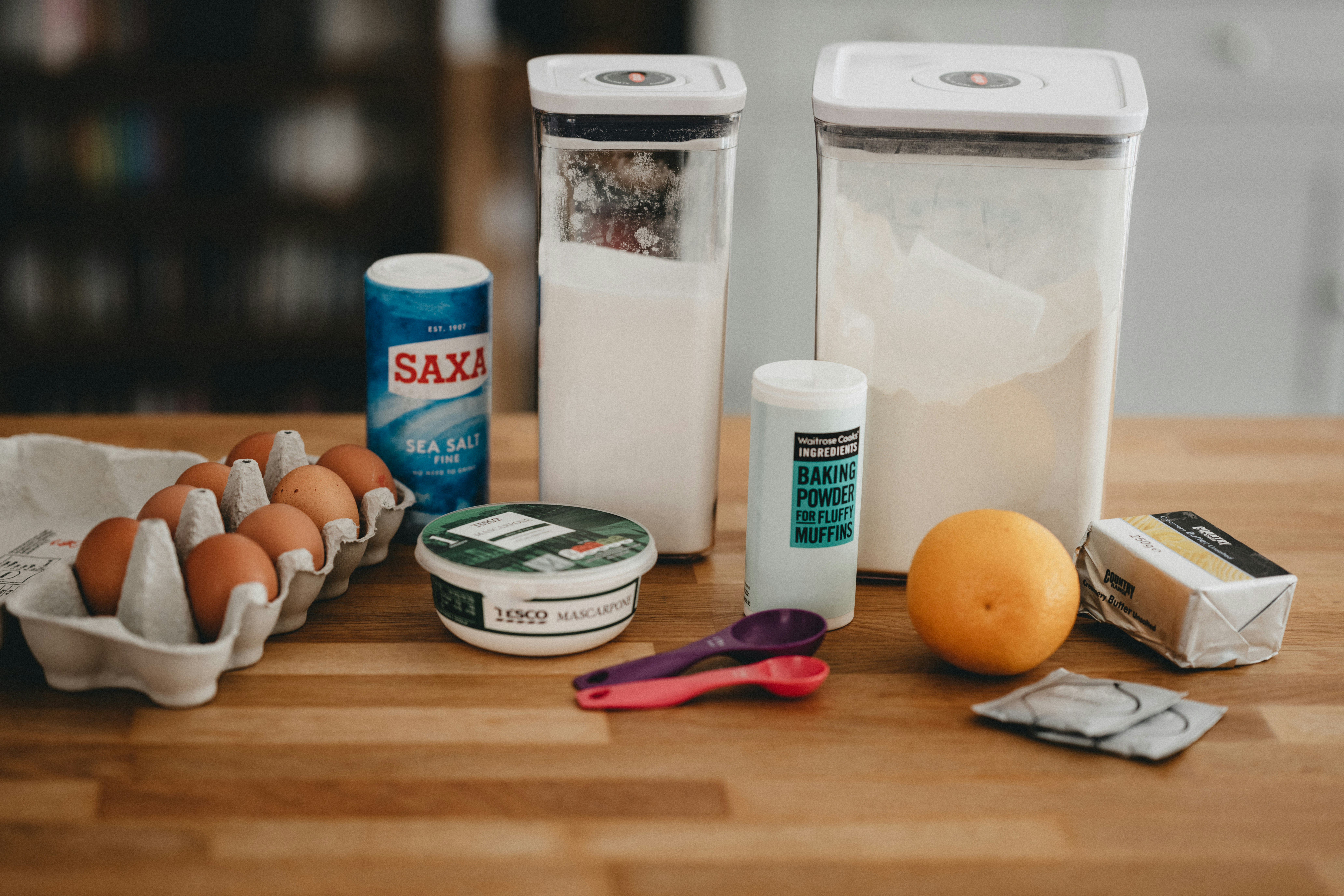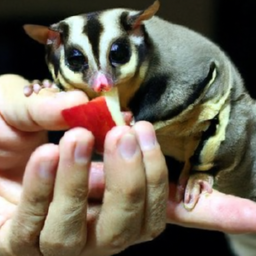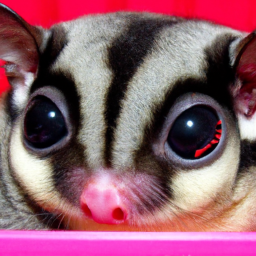How To Tell How Old A Sugar Glider Is
In this article, you will learn how to determine the age of a sugar glider. It can be challenging to accurately determine their age, but there are a few signs you can look out for. By observing their physical characteristics and behavior, you will be able to have a rough estimate of their age.
When trying to determine the age of a sugar glider, one of the first things you can look at is their size. Younger sugar gliders are generally smaller and more petite, while older ones tend to be larger and more robust. Another clue is their fur. Baby sugar gliders usually have very soft and fluffy fur, which gradually becomes sleeker and shinier as they mature. Additionally, observing their behavior can also give you some insights into their age. Younger gliders are typically more energetic and playful, while older ones tend to be more calm and relaxed. By considering these factors together, you can get a better idea of how old a sugar glider may be.
Why it’s important to know the age of a sugar glider
Understanding the health needs of different age groups
Knowing the age of a sugar glider is essential for providing proper healthcare and meeting their specific needs. Just like humans, sugar gliders have different requirements at each stage of their life. By understanding their age, you can tailor their diet, monitor their growth, and ensure they receive the right health care interventions.
Determining appropriate diet and nutritional requirements
The nutritional needs of a sugar glider vary depending on their age. Young joeys, for example, require a diet consisting mainly of milk and high-protein foods. As they grow and enter different stages of development, their diet transitions to include more fruits, vegetables, and certain insects. By knowing the age of your sugar glider, you can provide them with the appropriate diet to support their growth and overall health.
Planning for breeding and reproduction
In order to make informed decisions about breeding, it is crucial to know the age of a sugar glider. Breeding should only occur when the glider has reached sexual maturity and is physically capable of reproducing. By accurately determining their age, you can prevent breeding at an inappropriate time and promote responsible breeding practices.
Scheduling veterinary check-ups and vaccinations
Regular veterinary care is essential to the health and well-being of a sugar glider. However, the frequency and types of check-ups and vaccinations may vary depending on their age. Young sugar gliders may require more frequent visits to monitor their growth and ensure that they are developing properly. Older gliders, on the other hand, may require specific vaccinations or tests to detect age-related health issues. By knowing the age of your sugar glider, you can schedule appropriate veterinary care and ensure their long-term health.
Physical indicators to determine the age of a sugar glider
Examine the size and weight of the sugar glider
One of the first indicators of a sugar glider’s age is their size and weight. Joeys, when born, are tiny and underdeveloped. They gradually grow and gain weight as they age. By comparing the size and weight of a sugar glider to reference charts or previous measurements, you can estimate their age within a certain range.
Inspect the fur and coloration changes
The fur and coloration of a sugar glider also change as they age. Young joeys often have sparse fur, which gradually becomes thicker and more vibrant as they grow older. Paying attention to the fur’s texture, density, and color can provide clues about the glider’s age. However, it’s important to remember that individual variation and environmental factors can also influence fur appearance.
Check for signs of sexual maturity
Another way to determine the age of a sugar glider is by checking for signs of sexual maturity. Male sugar gliders develop a scent gland on their forehead that becomes more prominent as they reach sexual maturity. Additionally, both males and females develop reproductive organs, such as pouches in females and scrotum in males, which become more visible as they grow older.
Observe the development of teeth and gums
The development of teeth and gums can also indicate the age of a sugar glider. Young joeys have baby teeth that are gradually replaced by permanent teeth as they mature. By observing the teeth and gums, you can estimate the age of a glider to some extent. However, it’s important to note that dental development may vary, so this method should be used in conjunction with other physical indicators.
Behavioral changes associated with age
Recognizing signs of a glider’s age through activity levels
The behavior of a sugar glider can provide valuable insights into their age. Young joeys are often more active and curious, constantly exploring their surroundings and engaging in play. As sugar gliders age, they may become less energetic and more relaxed. By observing their activity levels, you can get an idea of whether they are in the early stages of development or approaching maturity.
Understanding the impact of age on sociability
Sugar gliders are social animals that form strong bonds with their owners and other gliders. However, age can affect their sociability. Younger gliders may be more dependent on their human caregivers and require more attention and interaction. Older gliders, on the other hand, may become less sociable as they become more independent. By understanding the impact of age on sociability, you can adjust your interactions and provide the right level of companionship for your sugar glider.
Identifying behavioral differences between young and old sugar gliders
Along with activity levels and sociability, there are other behavioral differences between young and old sugar gliders. Young joeys may exhibit more exploration behaviors, such as climbing and jumping, while older gliders may become more territorial and exhibit less playful behavior. By observing their behavior patterns, you can gain insights into their age and adapt your care accordingly.
Observing changes in sleep patterns
Sleep patterns can also change as sugar gliders age. Young joeys require more sleep and tend to nap frequently throughout the day. As they grow older, their sleep patterns may become more regular and aligned with human schedules. By monitoring their sleep patterns, you can get an idea of their age and adjust their habitat to provide a comfortable resting area.
Understanding the growth stages of a sugar glider
Exploring the joey (baby) stage and its characteristics
The joey stage refers to the period when sugar gliders are babies. During this stage, joeys are typically white, hairless, and very small. They spend most of their time in their mother’s pouch, where they nurse and develop until they’re ready to venture out. The joey stage is crucial for their growth and development, and it’s important to provide the right environment and nutrition during this time.
Learning about the weaning process and its importance
Weaning is the process of transitioning a sugar glider from a milk-based diet to solid food. It typically occurs around 8 to 10 weeks of age. By observing the weaning process, you can estimate the age of a sugar glider. Weaning is important as it helps develop their digestive system and prepares them for a varied diet. It’s important to provide appropriate food options and monitor their progress during this important stage.
Understanding the development during the juvenile stage
The juvenile stage is a critical period in a sugar glider’s life. During this stage, they continue to grow and develop, both physically and socially. They become more independent and start exploring their surroundings. This is also the time when they begin to develop their flying skills. By recognizing the characteristics of the juvenile stage, you can better understand their age and provide appropriate care.
Recognizing the signs of adulthood and maturity
As sugar gliders reach adulthood, they exhibit certain physical and behavioral changes. Males become more sexually mature, developing a distinct scent gland and exhibiting territorial behavior. Females may start exhibiting nesting behaviors and becoming more assertive. Recognizing these signs of adulthood can help you determine the age of your sugar glider and adapt their care accordingly.
Methods to determine the approximate age of a sugar glider
Consulting with a veterinarian for a professional assessment
If you are unsure about the age of your sugar glider, it’s always best to consult with a veterinarian who specializes in exotic pets. They will have the experience and knowledge to accurately assess the age of your glider through a combination of physical examination and behavioral observation. A veterinarian can also provide you with pertinent information and guidance on how to care for your glider based on their age.
Using available reference materials and online resources
There are various reference materials and online resources available that can help you estimate the age of your sugar glider. These resources often provide detailed descriptions, photographs, and reference charts to help you identify the characteristics associated with specific age ranges. However, it’s important to remember that each sugar glider is unique, and individual variation may exist.
Examining the physical appearance and behavior of the glider
By carefully observing the physical appearance and behavior of your sugar glider, you can make an approximate estimation of their age. Pay attention to size, weight, fur density, color, teeth development, and reproductive signs. Combine these physical indicators with behavioral observations, such as activity levels and sociability, to get a clearer picture of their age.
Estimating age based on previous owner information or rescue history
If you acquired your sugar glider from a previous owner or rescue organization, they may have some information about the glider’s age. While this information may not be entirely accurate, it can give you a general idea of their age range. Keep in mind that there may be discrepancies or limited information available, so it’s important to corroborate this information with other age estimation methods.
Challenges and limitations in accurately determining age
Lack of standardized age measurement techniques
Unfortunately, there is no standardized method for measuring the age of a sugar glider. While physical indicators and behavioral observations can provide valuable information, they are not always accurate or precise. Age estimation is often based on general characteristics and comparisons, which can lead to variations in the estimation process.
Difficulties in differentiating certain growth stages
Some growth stages of a sugar glider may be harder to differentiate than others. For example, distinguishing between a young juvenile and an adult can be challenging, as physical changes may be subtle during this transition period. It requires a keen eye and experience to accurately determine the age during these specific growth stages.
Age-related variations within a sugar glider population
Sugar gliders, like any living beings, exhibit individual variation within their population. This means that certain characteristics associated with a specific age may not be consistent across all gliders. Factors such as genetics, nutrition, and environment can influence their growth and development, leading to variations in physical appearance and behavior within the same age range.
Impact of environmental factors on growth and development
Environmental factors can significantly impact the growth and development of a sugar glider. Factors such as diet, habitat conditions, social interactions, and exercise can affect their overall health and how they age. As a result, accurate age determination can be challenging due to the influence of these environmental factors on their physical characteristics and behavior.
Tips for new sugar glider owners
Consulting a reputable breeder or experienced owner for guidance
If you are a new sugar glider owner and wish to determine the age of your glider, it’s wise to seek guidance from a reputable breeder or an experienced owner. They can provide valuable insights based on their experience and knowledge. They may also be able to provide tips and tricks for estimating age based on specific characteristics or behaviors.
Building a trusting relationship with the glider to enable age assessment
Sugar gliders are known for their bonding capabilities, and establishing a trusting relationship with your glider is crucial. By gaining their trust, you can handle them more easily and conduct closer physical examinations. This trust also enables you to observe their behavior more closely, making it easier to estimate their age based on activity levels, sociability, and other behavioral cues.
Maintaining a detailed health and growth record
Keeping a detailed health and growth record is essential for any sugar glider owner. By regularly documenting their weight, measurements, developmental milestones, and observations of physical and behavioral changes, you can establish a comprehensive history of your glider’s growth and development. This record can be invaluable in estimating their age and providing appropriate care.
Regularly observing and interacting with the sugar glider
Regular interaction and observation are key to understanding your sugar glider’s age. Spend time with your glider, watch how they behave, and pay attention to any changes in their physical appearance or behavior. This consistent observation allows you to build a deeper understanding of your glider and aids in more accurate age estimation.
Implications of incorrect age assessment
Inadequate care and nutrition for the glider
Incorrectly assessing the age of a sugar glider can lead to providing inadequate care and nutrition. Different age groups have specific needs, and by misjudging their age, you may inadvertently provide improper care or an inappropriate diet. This can negatively impact their growth and overall health.
Difficulties in socializing with other gliders
Socializing with other gliders is an essential aspect of a sugar glider’s life. Accurately estimating their age ensures that they are introduced to suitable partners at the right time. If you mistakenly pair two gliders of different ages, it may lead to social difficulties and potential conflicts. Proper age assessment allows for successful socialization and the formation of harmonious glider groups.
Improper breeding and reproductive planning
Reproductive planning is crucial for both the welfare of the gliders and responsible breeding practices. If you inaccurately determine the age of your sugar gliders, you may unknowingly breed them too early or too late. Breeding at inappropriate times can have detrimental effects on the health of both the parents and any resulting offspring. Proper age assessment is essential for ensuring that breeding practices are carried out responsibly.
Limitations in addressing age-specific health issues
Understanding the age of your sugar glider is essential for addressing age-specific health issues. Different age groups are susceptible to certain health conditions, and accurate age estimation allows for proactive health management. Misjudging their age can result in overlooking potential health concerns or addressing issues that are not age-specific. By correctly identifying their age, you can provide targeted health care interventions and enable early detection of age-related health problems.
Is a Sugar Glider’s Age Related to Its Happiness?
When it comes to telling happy sugar glider, age does play a role in their overall well-being. Young sugar gliders are often more energetic and playful, while older ones may experience health issues that can affect their happiness. Proper care and attention can help keep sugar gliders of all ages content.
Conclusion
Accurately determining the age of a sugar glider is crucial for their overall well-being and appropriate care. By considering physical indicators, behavioral changes, and growth stages, you can estimate the age of your gliders with a reasonable level of accuracy. Consulting with professionals, maintaining thorough records, and regular observation can help overcome challenges and ensure the best possible care for your sugar gliders. Remember, each sugar glider is unique, so it’s important to tailor their care based on their individual needs and behaviors. By providing the right care at each stage of their life, you can ensure a healthy and fulfilling life for your sugar gliders.
